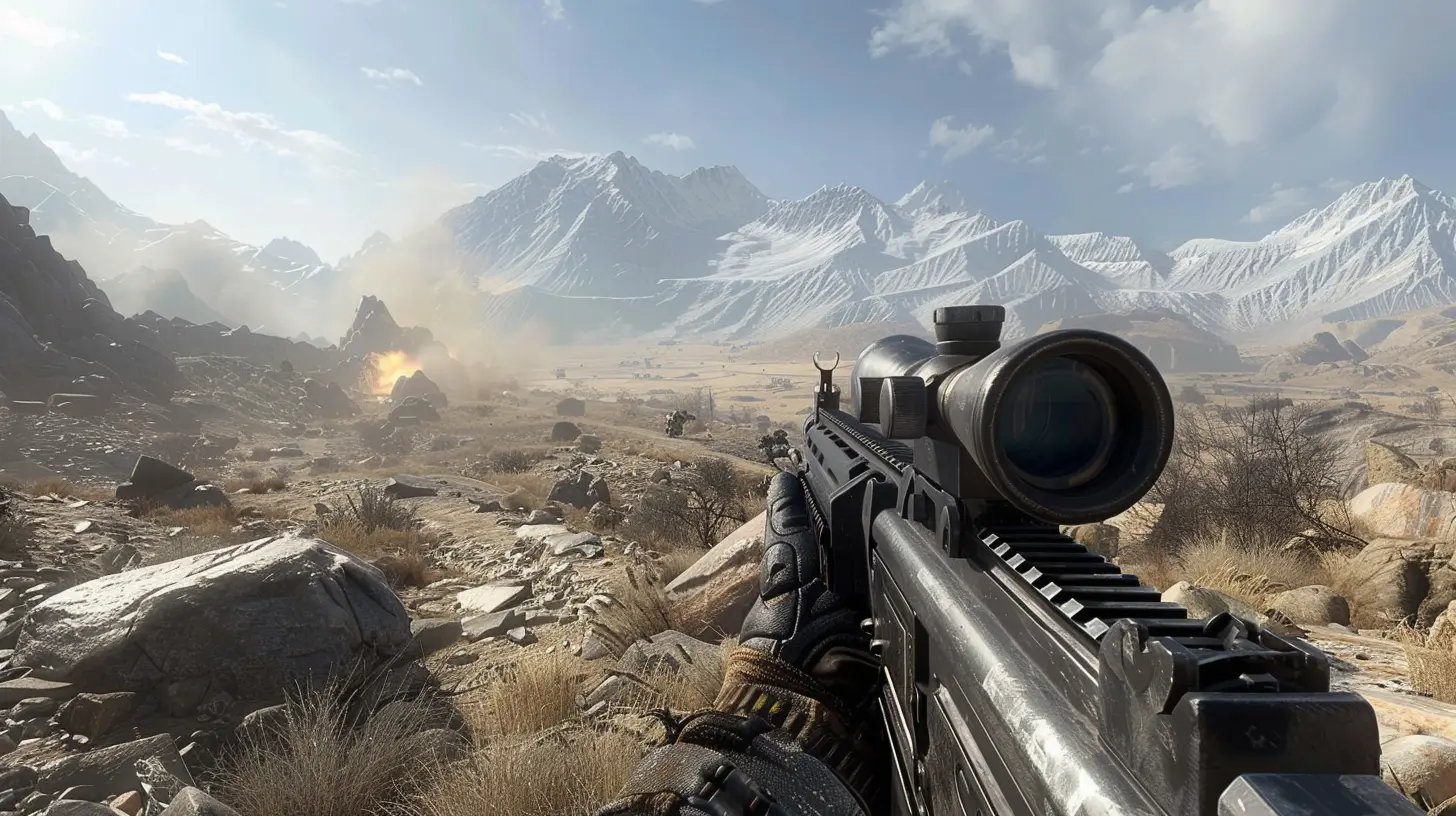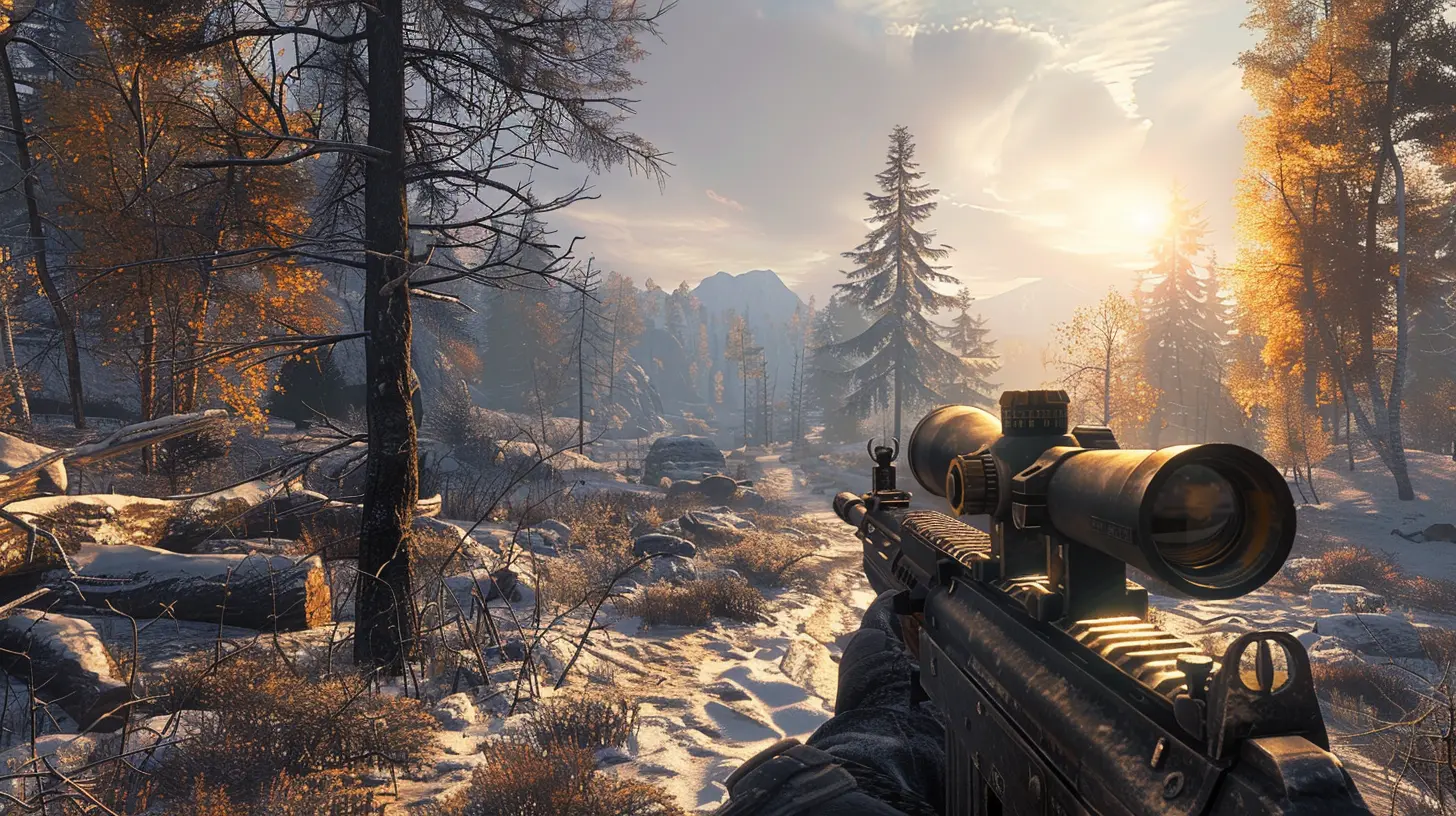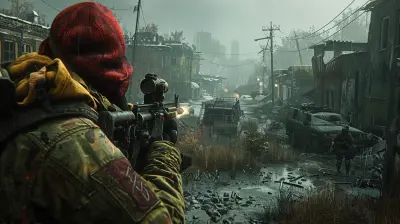The Evolution of Mobility in Third-Person Shooters
5 October 2025
Ah, third-person shooters—the genre that lets you see your character bouncing around like a caffeine-fueled parkour enthusiast while you empty magazine after magazine into waves of enemies. If gaming genres were family members, third-person shooters would be the cousin who insists on doing backflips off the trampoline at every family reunion. You can’t help but stare, root for them, and quietly think, “This is either going to end gloriously or catastrophically.”
But let’s take a step back—how did we get here? From the early days when characters moved like they were wading through molasses in knee-deep snow, to today’s games where they zip, roll, and literally fly, mobility in third-person shooters has seen some seriously impressive evolution. So grab a controller—or just sit back—but either way, we’re diving headfirst into how this genre went from awkward strafing to gravity-defying stunts.

The Static Beginnings: Movement? What’s That?
Back in the early days of gaming, mobility in third-person shooters was, well… kind of like watching someone try to dance but only knowing how to do the robot. It was stiff. It was functional. But it wasn’t winning any awards.Remember titles like “Resident Evil” (1996)? Sure, it’s a classic now, but asking your character to turn felt like waiting for a rusty ship to complete a 360-degree turn. The tank controls were iconic but clunky. You weren’t sprinting or vaulting over obstacles—you were taking long, contemplative walks toward your inevitable doom.
And let’s not forget “Tomb Raider” (1996). Lara Croft may have been doing more than just walking (she was literally flipping around like an acrobat), but her movement was grid-based and noticeably mechanical. She didn’t flow; she calculated. Each jump felt like solving a math problem.
Back then, mobility wasn’t flashy; it was just a tool to help you not die. You didn’t feel like a superhero. You felt like a normal person who regretted skipping leg day. 
The Great Awakening: Enter the Dodge Roll
Fast forward to the early 2000s, and third-person shooters began hitting the gym. Suddenly, games weren’t just about walking forward and shooting stuff—they were introducing moves that made you feel alive.Take “Max Payne” (2001) as Exhibit A. Not only did Max bring his noir monologues and tragic backstory to the table, but he also brought Bullet Time. Need to dodge an enemy’s attack? Say no more. Max would swan-dive through the air in slow-motion, dual pistols blazing. It was like watching an action movie unfold, and for the first time, players felt like they were in the driver’s seat of that chaos.
Around the same time, “Devil May Cry” (2001) was giving gamers a taste of high-speed movement and acrobatics. Sure, it leaned a bit more into hack-and-slash territory, but dashing, jumping, and combo-stringing enemies into oblivion became addicting. Movement wasn’t just about getting from Point A to Point B anymore—it was about style.
Suddenly, every third-person shooter felt the need to give players at least one button that let them dodge-roll. Because let's face it, if you weren’t diving sideways while shooting, were you even gaming?
The Parkour Craze: “Look, Ma! I Can Climb Walls!”
By the mid-2000s, developers stopped asking if characters could move fluidly and started asking, “But what if they could climb literally everything?” Enter the age of parkour-inspired movement.This was the era where mobility in third-person shooters evolved from "functional" to "choreographed chaos." Games like “Uncharted” (2007) pushed the boundaries of what was possible. Nathan Drake wasn’t just shooting bad guys; he was scaling cliffs, leaping across collapsing bridges, and somehow surviving falls that would’ve made any chiropractor wince.
Around the same time, “Assassin’s Creed” (2007) brought its own flavor of movement into the mix. While technically more of an action-adventure game, its flowing parkour mechanics influenced many third-person shooters. Suddenly, climbing walls and vaulting over ledges weren’t just gimmicks—they were essential parts of gameplay.
This was also the era where devs realized: “What if characters could move like Spider-Man, but without the spandex?” The result was mobility systems that weren’t just functional—they were fun. 
The Jetpack Revolution: Why Walk When You Can Fly?
By the 2010s, developers essentially said, “Okay, walking is overrated. Let’s just put jetpacks on everyone.” Mobility in third-person shooters took a massive leap—almost literally—as games began letting players defy gravity.Look no further than “Mass Effect: Andromeda” (2017). While the game may have had its issues (cough stiff animations cough), the jetpack mechanic was not one of them. Being able to zip vertically into the air added a whole new layer to combat. Fights weren’t just ground-level affairs—they became chaotic, multi-dimensional battles.
Then there was “Titanfall 2” (2016). Sure, technically it’s more a first-person shooter, but its wall-running and double-jumping mechanics blurred the lines between grounded gameplay and aerial acrobatics. Did every third-person shooter copy this formula afterward? Pretty much. And honestly, we’re not mad about it.
With jetpacks, grappling hooks, and wall-running, mobility entered a phase where the question wasn’t “Can we cross this gap?” but rather “How many flips can I do while crossing this gap?”
Today’s Mobility: A Ballet of Chaos
And now, here we are—in the modern era of third-person shooters, where mobility feels more like an art form than a function. Games today don’t just focus on what movement can do—they focus on how cool it looks while doing it.Take “Fortnite”, for example. (Don’t groan, you knew it was coming.) Love it or hate it, you can’t deny that Fortnite’s building mechanics essentially made mobility an Olympic sport. If you’re not cranking 90s or editing walls faster than your opponent, you’re probably already back in the lobby.
Then there’s “Warframe”—the game that decided “parkour” wasn’t extreme enough, so it gave players the ability to bullet-jump across entire maps. Warframe’s gameplay is the gaming equivalent of watching a caffeinated squirrel that just discovered rollerblades. It’s fast, it’s chaotic, and it’s absurdly fun.
Even newer titles like “Outriders” (2021) combine mobility with power-fantasy. You’re no longer just a soldier with a gun—you’re a superhuman powerhouse who teleports, dashes, and turns enemies into fine red mist while barely touching the ground.
What’s Next? The Future of Mobility in Third-Person Shooters
So, where do we go from here? We’ve already gone from walking like clunky robots to gliding, flipping, and flying like action-movie heroes. What’s left?Probably space. Honestly, zero-gravity combat feels like the next logical step. Imagine a third-person shooter where your character can float, drift, and grapple off debris while blasting enemies. (Developers, you can keep this idea—just don’t forget to credit me in the credits. I’ll wait.)
Or maybe we’ll see VR third-person shooters with full-blown motion capture, letting you somersault across your living room. Sure, you might break a lamp or two, but hey, that’s the price of progress.
Conclusion
The evolution of mobility in third-person shooters is like watching a baby bird learn to fly—it starts awkward, takes a few leaps, and then suddenly it’s gracefully soaring through the air. We’ve gone from stiff animations and tank controls to fluid movement systems that make you feel like a superhero.And the best part? It’s not slowing down. As technology advances, so does the creativity of game developers. Whether it’s grappling across a battlefield or jetpacking into the sky, one thing’s for sure—mobility in third-person shooters will continue to keep us on the edge of our seats (or couches).
So the next time you’re diving, flipping, or wall-running through a game, take a moment to appreciate how far gaming has come. Then roll dodge out of the way—because trust me, there’s probably an enemy aiming at you.
all images in this post were generated using AI tools
Category:
Third Person ShooterAuthor:

Kaitlyn Pace
Discussion
rate this article
1 comments
Echo Kelly
Great read! It's fascinating to see how mobility has transformed gameplay in third-person shooters. The balance between movement and strategy continues to redefine player experiences.
October 10, 2025 at 3:54 AM

Kaitlyn Pace
Thank you! I’m glad you enjoyed it. Mobility truly is a game-changer in shaping strategy and enhancing player experiences.

